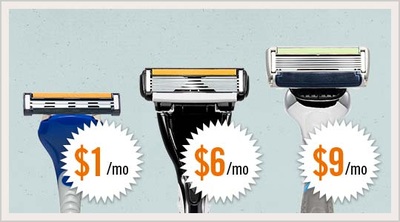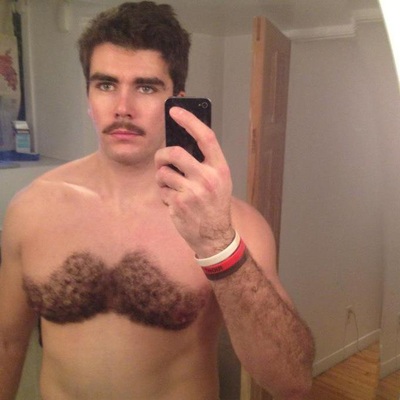|
It's that time of year again, when men around the globe begin growing ridiculous mustaches in partnership with a campaign called Movember. The idea is to challenge men to grow absurd mustaches while people pledge money generating funding and awareness for Prostate and Testicular cancer, as well as men's health. Besides being an excuse to grow funny facial hair, it also provides the ladies with some delicious yet comical eye candy. Since 2003 Movember has raised over $559 million dollars, equating to about $5 million a year. Movember throws some pretty epic parties, not only from the bros but including the gals too. Now if you're ill equipped to grow a stash keep on keeping on, this is the true comical relief needed to keep Movember growing.
During this time if you're too lazy to hit up a drug store, grocery store, bodega, or basically anywhere; then maybe the Dollar Shave Club is for you. The club is an opportunity burn cash, throw your money out the window, and more or less "shave" dollars off your saving account. For $1 to $9 a month, the Dollar Shave Club sends you the essential razors needed to groom your face. There is no dollar in the Dollar Shave Club, unless you shop for the shitty single blade. But we all know your face is your greatest asset, therefore one 6-blade razor will cost you about $4.50 versus Amazon's one 6-blade razor is only $2 (in a package of 6). The real question is when did razor shopping become so difficult? Also why would you ever buy one item one place? If you hate shopping, opt for online and get all your toiletries at one place such as Soap.com. And if shaving as a whole has become so cumbersome, why not go to the barber for a hot towel shave? The Dollar Shave Club was founded by Mark Levine and Michael Dubin who after bitching about shaving and razor prices, they raised a million dollars in seed money between July 2011 and March 2012. With other investors and venture capitalists funding, they dove straight into the market with a viral video that not only crashed their server but attracted 12,000 order in less than 48 hours. Today they have acquired over 600,00 members. Venturebeat.com estimates DSC's netted $9.8 million in 2012, only to be followed by a mere $10,000 donation to The Colon Cancer alliance. Mark Levine served on President Reagan's administration and is valued at $5 million, while his younger counterpart Michael Dublin is a marketing genus and business guru. In conclusion, mustaches and beards are hot, as is awareness and giving back. Remember this election day, we're not only voting with our dollars but also putting our money where our mouths or in your instance mustaches are. So just because you see a cheeky video and a clever business plan, doesn't necessarily mean it's rational to buy in. Sure it is a great idea, but what happens when you'r traveling or you accidentally drop your razor in the toilet, what if the mail doesn't come? Then what. Ladies, it's only too bad there isn't a Dollar Tampon Club.
0 Comments
Leave a Reply. |
LAJ
100 Objects of Popular and Material Culture is an blog exploring the manifestations of human consumption and commodity-ization. The purpose of this experiment is to explore material and popular culture in contemporary society by using objects and concepts to prompt wider questions and reflections. So by emulating The British Museum's and Neil MacGregor's format of A History of the World in 100 Objects I plan to satirically analyze and reinterpreted 100 material culture objects over the course of 2014. Material Culture is the study of our culture's consumption of stuff; namely the manifestation of culture through material productions where people's perceptions of objects is socially and culturally dependent. With this, objects reflect conscious and unconscious beliefs on the the individuals who fabricated, purchased, or used them, and by extension the society where they live. So examining materiality, cultural truths and societal assumptions may be discovered. As anthropologist Arjun Appaduai states "in any society the individual is often caught between the cultural structure of commodity-ization and his own personal attempts to bring a value and order to the universe of things." Objects and commodities make up a much larger symbolic system consisting of want and need, socio-economic status, fashion, etc. Often times form follows function whether the commodity, market, and or consumer forever evolve around one-another. Philosopher Pierre Bourdieu's theories of capital flow full circle; where regardless if you are a minimalist or a hoarder the world is made up of things and everyone will leave their footprint on the earth. So by humorously analyzing marketed objects and concepts, hopefully this blog will provide further incite into ideas of over-consumption, a disposable society, consumerism vs. anti-consumers, planned obsolescence vs. sustainability, as well as the greater good of mankind and future generations. Archives
March 2015
Categories |









 RSS Feed
RSS Feed